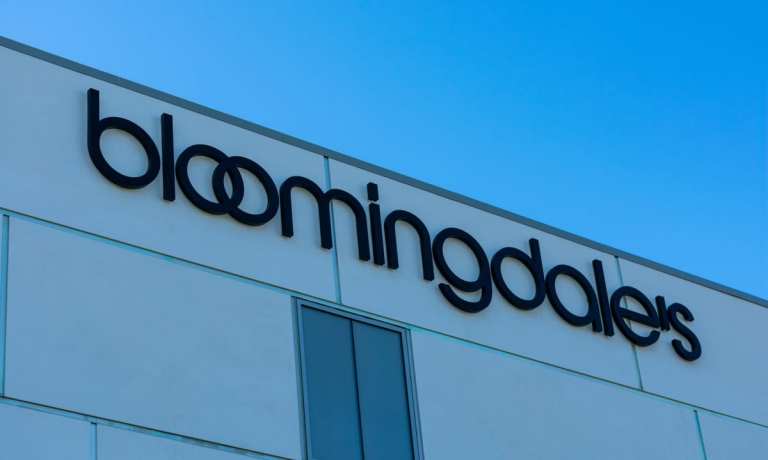When luxury department store chain Bloomingdale’s opens its new small-format store next month in Fairfax, Virginia, consumer experience will be front-and-center as the brand and parent company Macy’s work to find the best way to blend eCommerce with the in-store experience.
Tony Spring, CEO of Bloomingdale’s, said the goal of the 20,000-square foot Bloomie’s store, announced Wednesday (July 7), is to provide customers with “a highly edited, convenient” Bloomingdale’s experience. Bloomie’s will still offer personalization, customization and alteration services found at full Bloomingdale’s locations, but the products will be more highly curated and the store will focus on a customer’s experience.
Bloomie’s will sell women’s and men’s apparel, footwear, jewelry, handbags and beauty products, with merchandise rotating frequently throughout the week to give customers something fresh each time they return.
For Bloomie’s, Bloomingdale’s has intertwined the digital and physical experience, equipping stylists with digital selling capabilities that allow them to access “special finds” from other Bloomingdale’s stores and Bloomingdales.com. The store will also be laid out in a way that “drives customer discovery,” the brand said in its announcement, by highlighting trends and hosting product launches.
Customers will also be able to drop off returns at Bloomie’s and buy online for in-store or curbside pickup, a practice that has become ubiquitous in the last 18 months because of COVID-19 but is likely to stick around.
And if fashion wasn’t enough, Bloomie’s will also include a Colada Shop location, serving the restaurant’s full menu of cocktails, coffee and Cuban food. Daniella Senior, CEO and co-founder of Colada Shop, said in a statement that she is committed to creating “the most vibrant and sophisticated experiences” for consumers.
Advertisement: Scroll to Continue
Bloomingdale’s currently has 33 stores and 21 outlet locations across the U.S. More Bloomie’s stores are likely on the way, but no further details were disclosed.
Small Store, Big Idea
Though Macy’s has its own small-format stores with Market By Macy’s, CEO Jeff Gennette told investors and analysts in May that he sees the Bloomingdale’s brand as not only Macy’s access to higher price points but also as “is a test platform for innovation, sharing and the application of lessons learned across our brands.”
Two 20,000-square-foot Market by Macy’s locations have opened in Texas since February 2020, and three more expected later this year.
Gennette told investors and analysts in May that the company plans to continue building out its ecosystem of full-price, off-price and small-store concepts to see how they work in different areas over the long term.
“Together with our existing off-mall formats, these stores will allow us to test and iterate on new strategies to drive omni sales and convenience for our customers, while attracting new shoppers,” Gennette said.
Other brands that have utilized the small-format store include Target, which open 29 small-format stores in 2020 and currently has approximately 140. Earlier this year Target said it plans to open 30 to 40 new locations annually in addition to remodeling its full-size stores, which average 130,000 square feet.
Through its small-format stores, Target Chief Operating Officer John Mulligan said earlier this year, the company is able to reach markets and consumers that it was previously unable to, such as colleges, urban centers and dense suburban cities.
Nordstrom also opened a small-format store in 2017, albeit without any inventory. The 3,000-square-foot Nordstrom Local allows customers to buy online and pickup in store and provides dressing rooms for shoppers to try on clothes.
Re-Imagining Retail
The Bloomingdale’s announcement follows a rush of retailers looking to reinvent their in-store experience as the traditional paradigm of digital as an extension of the physical being turned on its head. With 92 percent of people shopping online in the past 12 months, according to PYMNTS Connected Economy research, brands now need to give consumers a reason to visit them in person.
Lego, for example, last month opened a new flagship store in New York City that includes “retailtainment” elements, such as an interactive Brick Lab, a Personalization Studio to create a memento of a customer’s visit and a Storytelling Table to learn more about the Lego design process. Lego intends to export several of these features to 100 other stores around the world in the coming year.
Rachel Dalton, director of eCommerce and omnichannel insights at Kantar, said at a National Retail Federation (NRF) conference last month that “we are in the middle of the third greatest retail revolution” following the dawn of eCommerce in the late 1990s and the rise of pure play a decade later.




